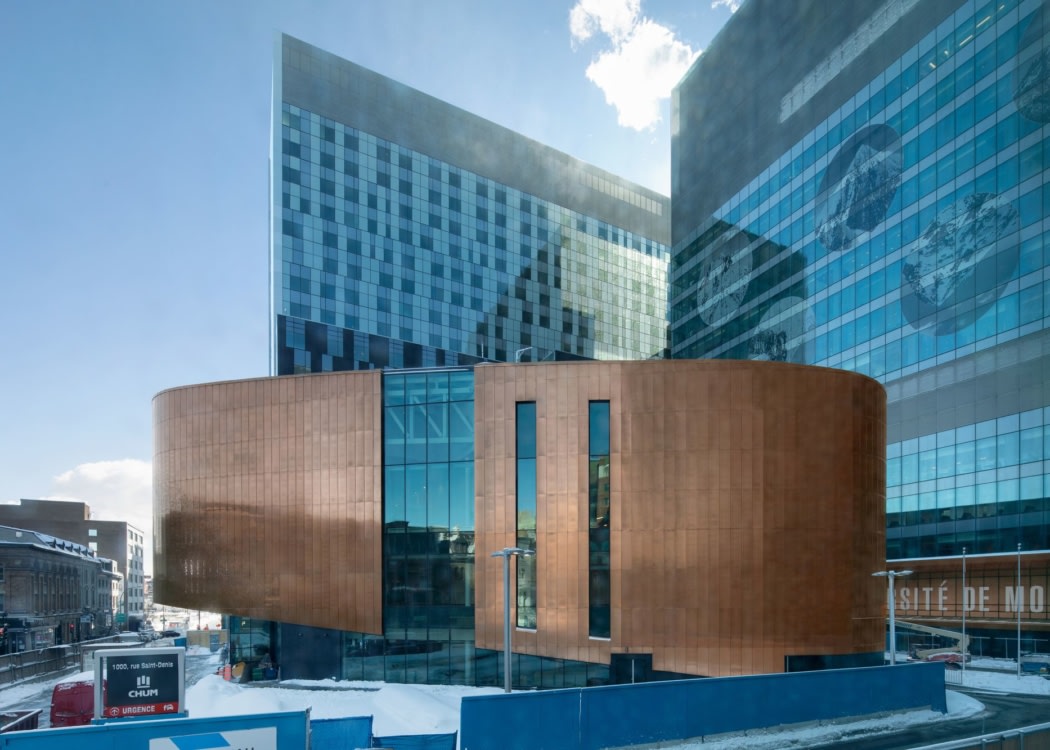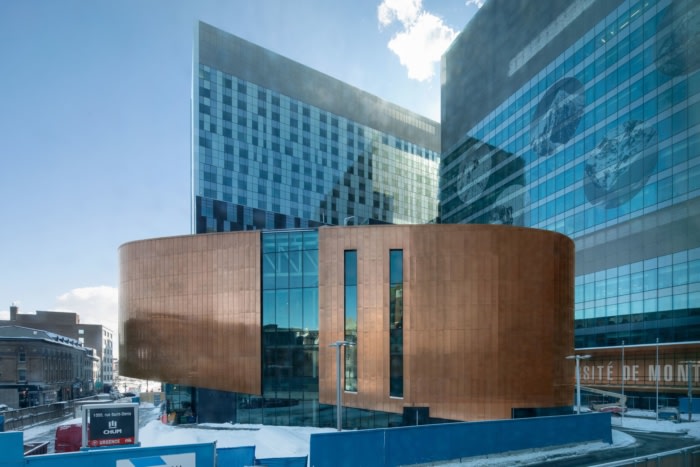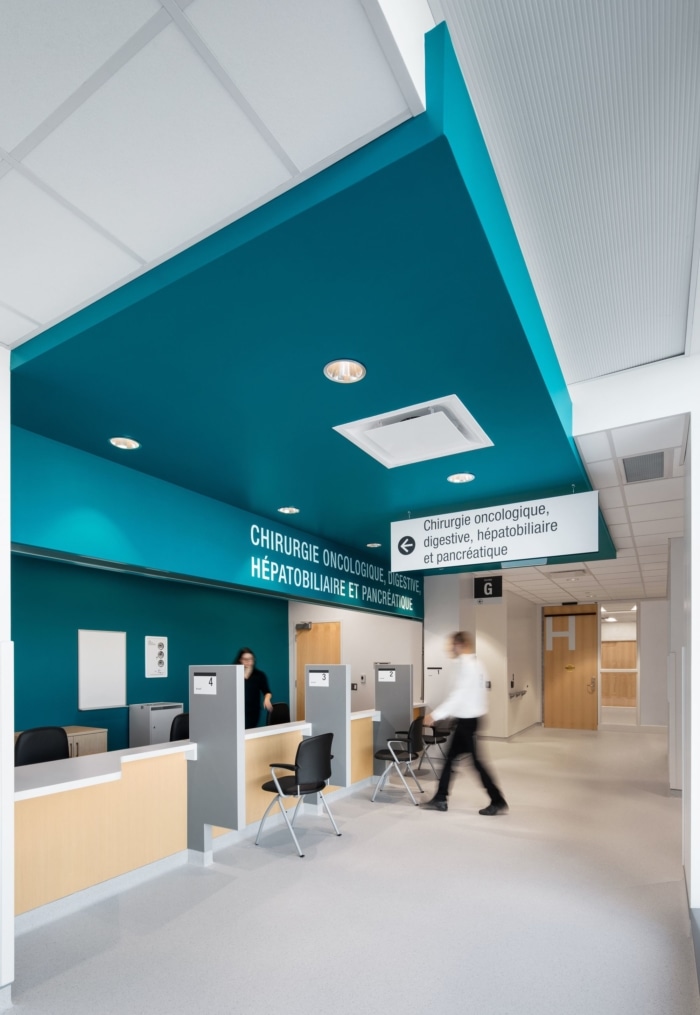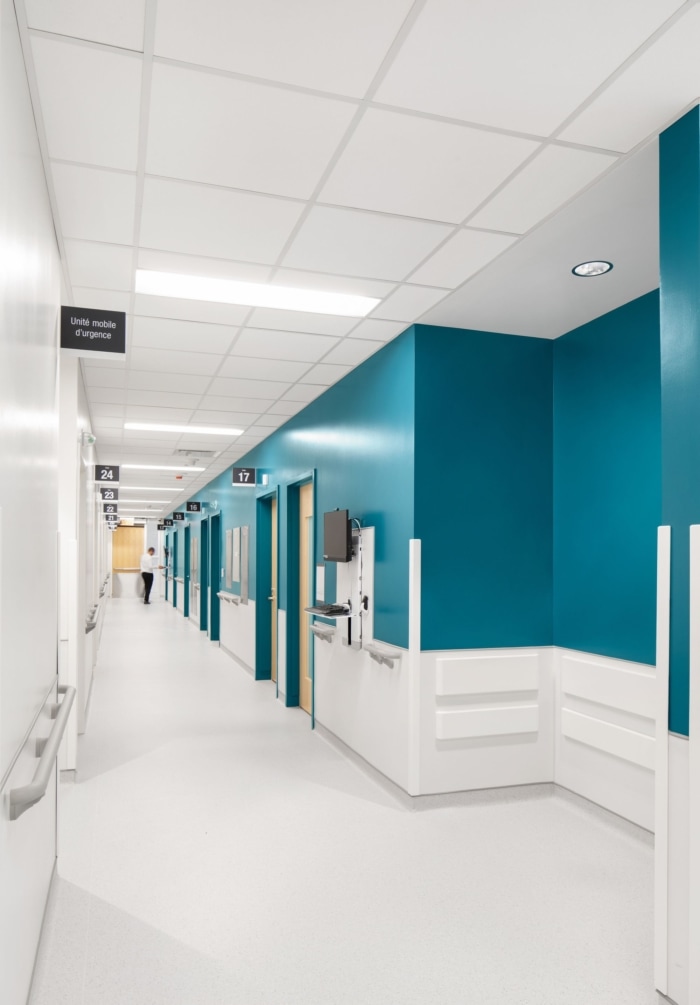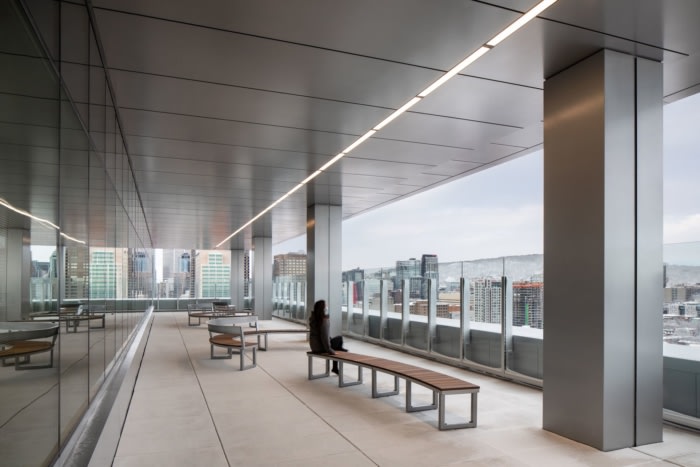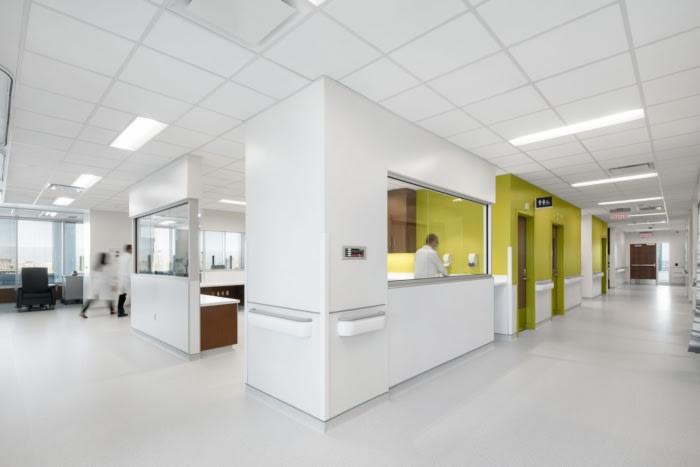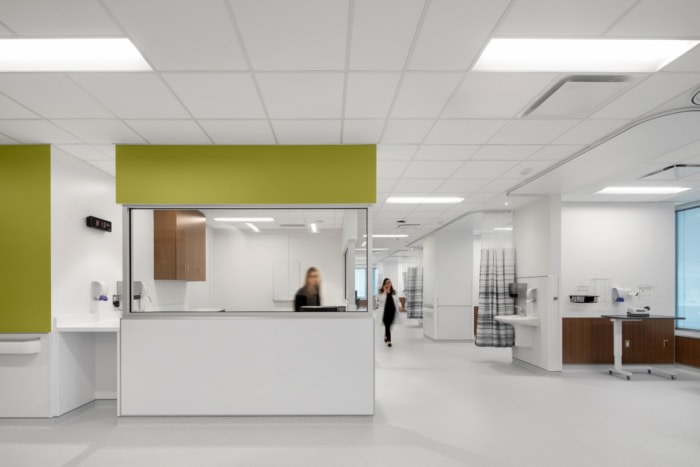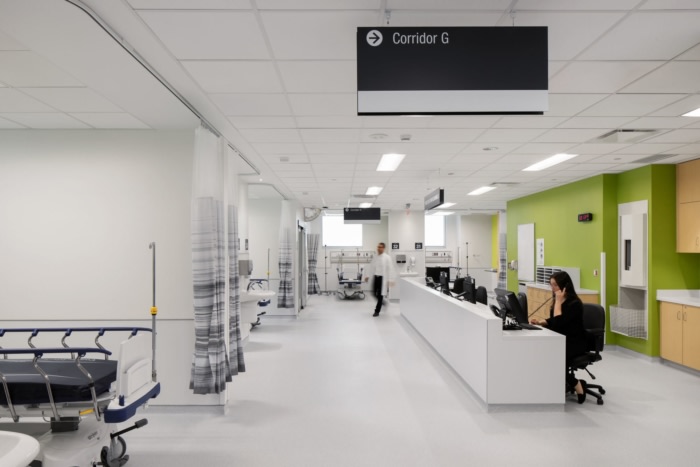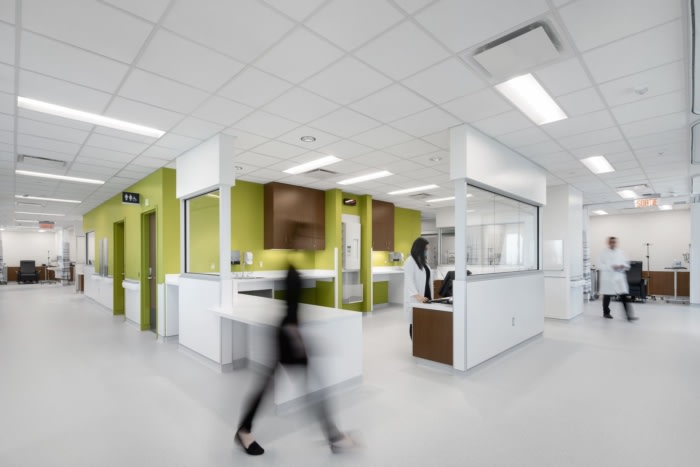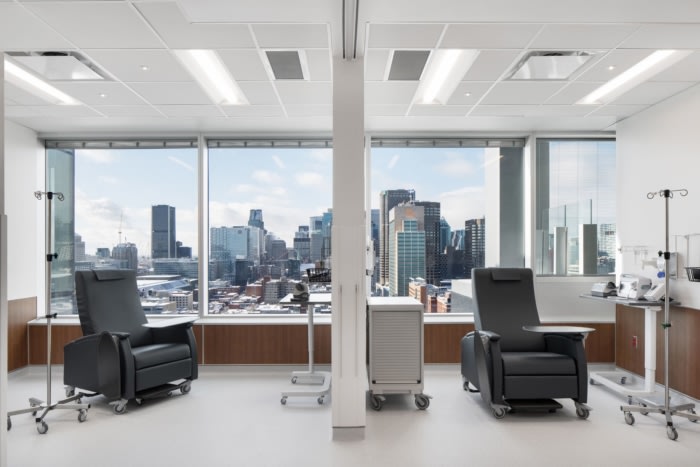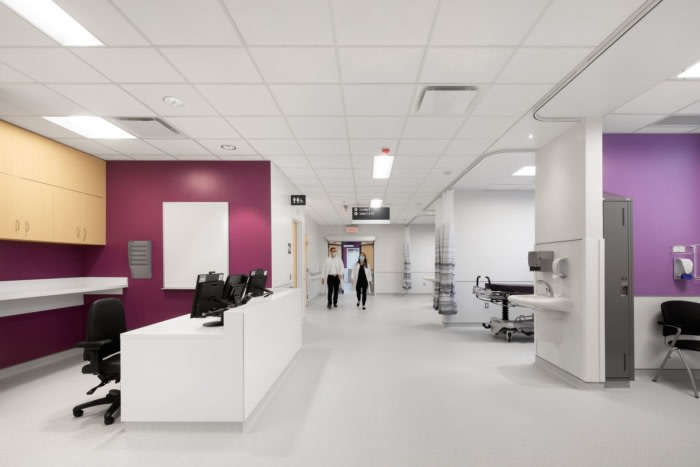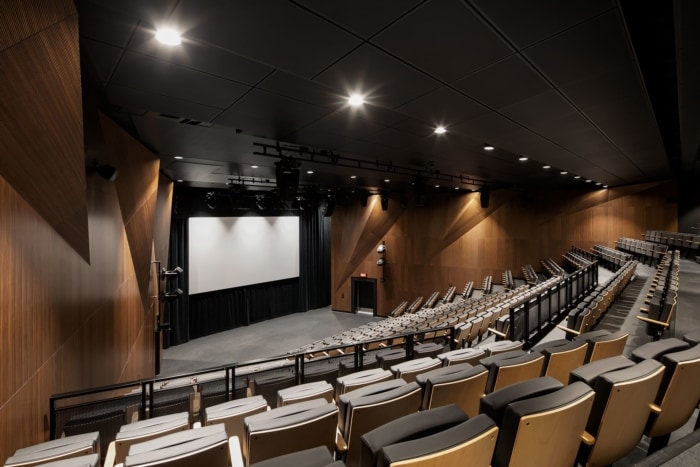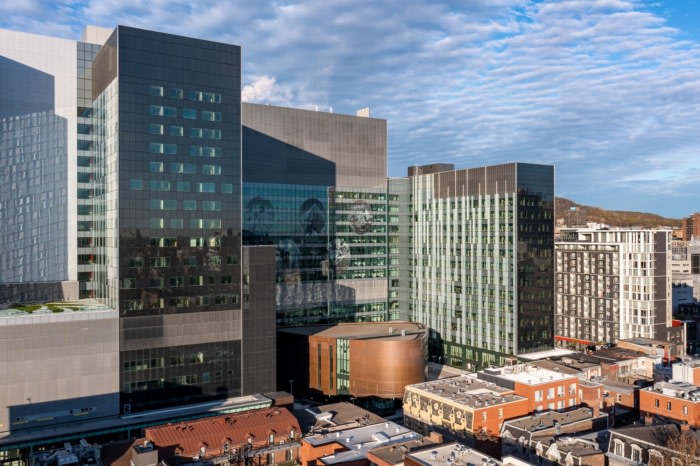Centre hospitalier de l’Université de Montréal (CHUM) Final Phase
Menkès Shooner Dagenais LeTourneux Architects and Jodoin Lamarre Pratte architectes integrated the most advanced technologies when designing the final phase of Centre hospitalier de l’Université de Montréal in Montreal, Canada.
In 2018, the firms Jodoin Lamarre Pratte architectes and Menkès Shooner Dagenais LeTourneux Architectes were commissioned to complete the final phase of the new Centre hospitalier de l’Université de Montréal (CHUM), designed during the first phase by CannonDesign et NEUF architectes. Erected at the corner of René-Lévesque Boulevard and Saint-Denis Street in downtown Montréal, this latest phase of the project follows those of the Research Centre (2013) and the hospital (2017 – Phase 1) and gives the CHUM the title of one of the most important hospital centres in North America.
Aiming for LEED Silver certification, this new facility integrates the most advanced technologies in the world and creates a care and research environment that puts people at the heart of every activity.
Big Project, Big Challenges
Located in the heart of a busy downtown Montreal quadrangle, the CHUM hospital complex is integrated into a dense urban environment, near the Ville-Marie expressway, a metro station and Montreal’s cosmopolitan and historic districts.Such a development in a hospital setting involves a multitude of considerations, each more important than the other, including specialized medical equipment, confidentiality requirements, infection control issues, traffic flow and layout efficiency.
The human being first
This last phase of the CHUM aimed to create an environment capable of welcoming and accompanying users, supporting them through diagnoses, treatments, follow-ups, and visits to their loved ones, in short, a caring environment for patients as well as for the staff who work there every day.The quality of the spaces has a direct impact on the quality of life of the users, on their feeling of safety and confidence, as well as on the staff and their work experience. Consultations with the various professionals involved led to the development of workspaces and rest areas with plenty of windows, task-adapted lighting and views towards the exterior.
An assessment of the plans was conducted to understand the frequent critical linkages between the different rooms, clinics, offices… Units were reorganized to optimize floor space and reduce travel distance, allowing medical staff to spend more time with patients.
Pierre-Péladeau Amphitheatre
With its unique and distinctive shape and its envelope made of copper panels, a noble, durable material reminiscent of the roofs of several emblematic institutional buildings in Montreal and elsewhere in Quebec, the Pierre-Péladeau Amphitheatre constitutes the “heart” of the project. The main auditorium, initially designed with fixed bleachers, was redesigned to integrate retractable bleachers. This large multifunctional auditorium, including varied technological and scenographic equipment, can accommodate 365 people in its standard configuration, while in cabaret mode, it offers nearly 150 seats. The building also houses five modular meeting rooms (the movable walls allow for the configuration of up to 10 meeting rooms), where acoustic is ensured using triple glass.A veritable structural feat, the building’s volumetry and large spans were achieved through a complex load-bearing frame and cantilevered shell and floors. Integrated above the underground parking lot, surrounded by a perimeter circulation path with access to the parking lot, and equipped with a full-width glass skylight on the roof, this amphitheatre was the source of many functional and technical challenges and required great mastery in both design and execution.
This last phase of the CHUM marks the end of a gigantic urban development project in the health sector. An avant-garde hospital complex where researchers, doctors and specialists join forces to contribute to a better society that takes care of its inhabitants. Once again, architecture has proven to be essential for the realization of a collective societal vision imbued with meaning and human values.
Design: Menkès Shooner Dagenais LeTourneux Architects and Jodoin Lamarre Pratte architectes
Photography: Adrien Williams, Olivier Gariépy

